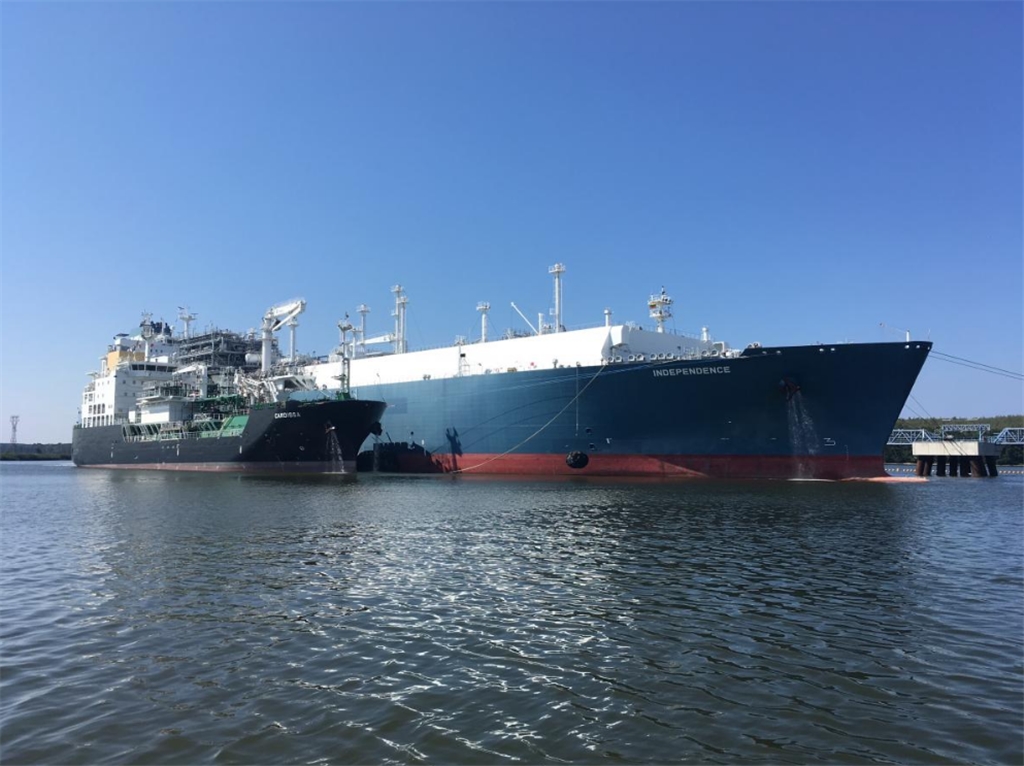Under the operation of KN, the operator of oil and liquefied natural gas (LNG) terminals, volumes at Klaipėda LNG terminal improved significantly in November, potentially reducing Lithuanian gas prices. In the last month of autumn, the volume of gas re-gasified at LNG Terminal was one-fifth higher than the volume of gas consumed nationwide. The gas price for Lithuanian consumers could be reduced as a result of collecting significant revenues for re-gasification of the gas for export.

In November, a total of three large and four small LNG vessels arrived at Klaipėda LNG terminal, bringing 450 thousand cubic meters of LNG. Most of the gas (92%) was delivered from a gas liquefaction plant in Norway. In total, about 2.7 TWh of gas was re-gasified in November, or 20% more than the entire need of Lithuania.
As of the beginning of 2019, the LNG terminal has carried out as many as 57 LNG loading and reloading operations, and the regasification rate for January-November 2019 is more than double the amount for January-November of 2018, with a total of 17.4 TWh of gas re-gasified by the end of November.
“The fifth operational year of Klaipėda LNG Terminal was a turning point for both consumers and the entire industry, said Arūnas Molis, the director of KN Klaipėda LNG office.
“Firstly, the terminal has handled more loading operations than over the last four years combined and attracted two users of the Terminal from Estonia. By using the services of the terminal, they directly reduce the security component for Lithuanian consumers. Second, due to the above circumstances and lower terminal costs, the National Energy Regulatory Council has been able to reduce the security component by nearly 4 million euros. The introduction of a new LNG supply model would further reduce the security component by almost 27 million euros. As a result, every gas consumer in the country will benefit as early as next year. Third, companies that import record amounts of gas through the terminal and their customers utilised the low price period in international gas markets as best as possible: preliminary calculations, comparing the market index and the Finnish regulator’s data, show that gas price from a single pipeline supplier for Finland in November was about EUR 5/MWh higher than the price of imported LNG in Lithuania. As a result, the same amount of gas imported at the terminal (2.7 TWh) saved the terminal users more than 10 million euros in November alone, even if all costs of the terminal are included.”
It is planned that the utilization of Klaipėda LNG terminal will remain extremely high during the last month of this year and in the upcoming years. Two large and five small LNG vessels will arrive in December, which will bring about 328 thousand cubic meters of LNG and the re-gasification rate will be about 2.2 TWh. Over the gas year of 2020 (from October 2019 to October 2020), users of the terminal will have booked re-gasification capacity in a total of over 19 TWh. This compares favourably to a total of 14TWh of gas which was re-gasified during the 2019 gas year (October 2018 to October 2019).
The efficient operation of the LNG terminal recorded in Klaipėda also reflects international trends. According to McKinsey & Company, the global gas market has grown 5.3% over the past year and is expected to grow 0.9% annually till 2035. The LNG segment is considered to be extremely promising - its growth is projected to be 3.5% annually till 2035. In addition, the European Association of Transmission System Operators for Gas (ENTSO-G) predicts that by 2025, a transforming power generation market alone will increase demand for natural gas to 290TWh.
“The increasing demand for natural gas in the world and in Europe opens up new opportunities for Klaipėda LNG terminal as well,” said Arūnas Molis.
“The natural gas infrastructure planned to be implemented in the upcoming years, connecting Poland and Lithuania as well as the Baltic States and Finland with other European Union countries through pipelines, will bring even more benefits to the Lithuanian population and efficient operation of the terminal. In addition, at the end of November, KN entered into a strategic partnership with the Polish oil and gas company PGNiG, which booked the capacity of the Klaipėda LNG Distribution Station for five years, this capacity will be used with maximum efficiency, while at the same time developing and expanding LNG market in Baltic countries and in Poland.”